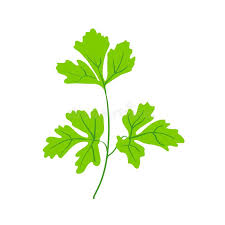Cilantro Seed, Sprouting Seeds, Microgreen, Sprouting, Non GMO
SCROLL DOWN FOR DESCRIPTION, GROWING INSTRUCTIONS, DETAILS, AND MORE!
Country Creek LLC
Cilantro Microgreen Seeds

Description & Nutritional Value
IMPORTANT NOTE:Cilantro seeds can be cracked and separated, it does that to increase the germination rate. It looks like that when we package them here at the warehouse. So if they appear to be "smashed" or "broken" upon arrival, I promise your seeds are perfectly fine. We actually recommend breaking them yourself to increase the germination rate.
People use cilantro as a flavorsome addition to soups, salads, curries, and other dishes. In some parts of the world, people call it coriander. In the United States, cilantro refers to the leaves, and coriander refers to the seeds. Its nutritional content may provide a range of health benefits.
Tray Sprouting - With Soil
Soak: No, these seeds are not actually very keen on water. Some people say it’s better to soak them (6 hours) so you need to experiment with this.
Rinse/drain: No, there rarely need watering and definitely don’t want to be soaked and drained.
Time to germinate: 2-3 days
Time to harvest: Between 14 and 21 days.
Step 1 – Prep The Planting
Select a tray in which to grow your cilantro microgreens. A good starting size is 10×20.
You’ll also need to select your growing medium. You can use soil but it is advisable to ensure it is sterilized. The best choice is a potting mix with vermiculite.
Top Tip: Cilantro is not keen on water, you need to ensure the growing medium is 1 inch deep as this will help it to retain moisture.
Step 2 – Plant Your Seeds
A 10×20 tray will take between 80-100 grams of dry (non-split) seeds, depending on whether you’re after microgreens or the slightly bigger ‘true leaves’.
Make sure you moisten the soil thoroughly before you sprinkle the seeds. To avoid puddles, use trays with holes in the bottom.
Once you watered your soil mix and sprinkled the seeds add another 1 inch of soil mix to the top of the seeds. This will encourage the seed hulls to fall off once they start to grow. If you don’t do this the seed hulls will still be attached to the top part of the microgreen, which you don’t want.
Now mist the topsoil to make it wet but not soaked. Now, cover up the tray to keep the moisture in and keep it in a dark place. It will take 5-9 days for cilantro to germinate.
Step 3 – Final Stages
Check the plants from day 5 onwards if there are any signs of wilting then water the growing medium, not the plants.
From day 7 onwards the cover can be removed and the plants moved to a sunnier location.
Monitor the plants but they will probably only need a little water every 3 days, and always water the growing medium – not the microgreens itself.
Step 4 – Ready To Harvest
Between day 14 and 21, the leaves will open and become greener, this means they are ready to harvest.
Bonus Tip: You can leave the plants for an extra week, allowing them to grow larger, this is known as true leaves; they have a slightly richer flavor.
How To Serve
Cilantro, also known as coriander, is a herb that everyone knows. But its use in cooking is not always obvious. This herb can be consumed from leaves to the root. So how do you cook it with fresh coriander, in the form of seeds and leaves? The fresh cilantro is on the shelves of seasonal products. Depending on how it is used, it often loses its flavor, hence the need to know how to cook with fresh cilantro.
The cilantro does not cook, it is used raw in the kitchen, just like parsley. It will be added to the dish after it is cooked. Introduced too early, it loses all its flavor. Also, be aware that fresh coriander is perfect to flavor fish, like seafood mussels with cream. Cilantro flavored dishes have become more and more popular among gourmets. On the other hand, cooking fresh coriander in combination with other spices adds an exotic note to a dish. Ginger, garlic, curry, coconut milk, and cilantro will make a delicious chicken.
Cilantro features distinctive, jagged leaves and a strong flavor that is often present in Mexican dishes, but the fresh herb pairs well with a variety of foods. Try cilantro in soups, on sandwiches, in sauces and in your casseroles. Growing your own cilantro gives you constant access to fresh leaves. If you purchase your cilantro at the store, however, avoid leaves and stems that are limp, wilted or uneven in color. Use the cilantro right away for the best flavor.


Origin
All Seeds are grown and packaged in the U.S. (Each bag is individually labeled)

Germination
All seed lots are tested for germination.

Sprouting
Works great with any type of sprouter.

